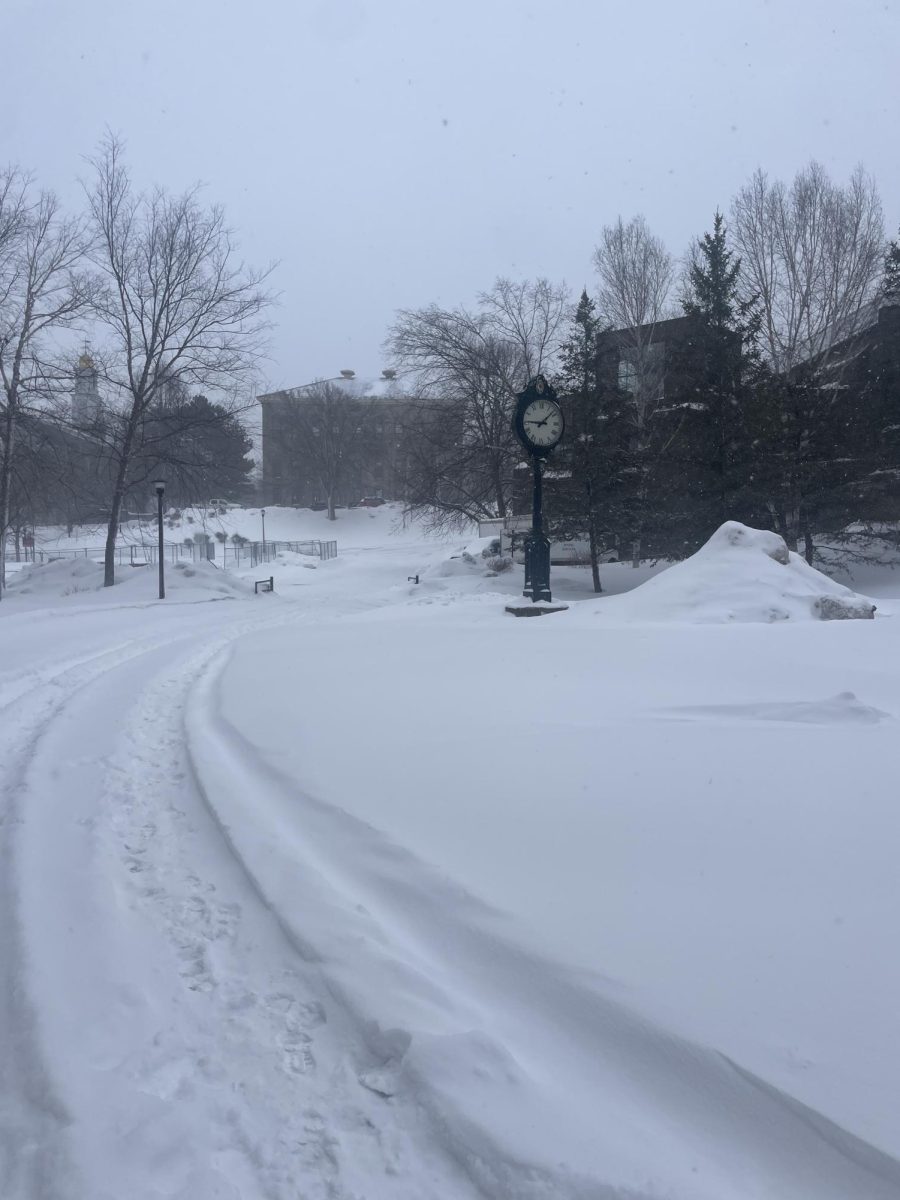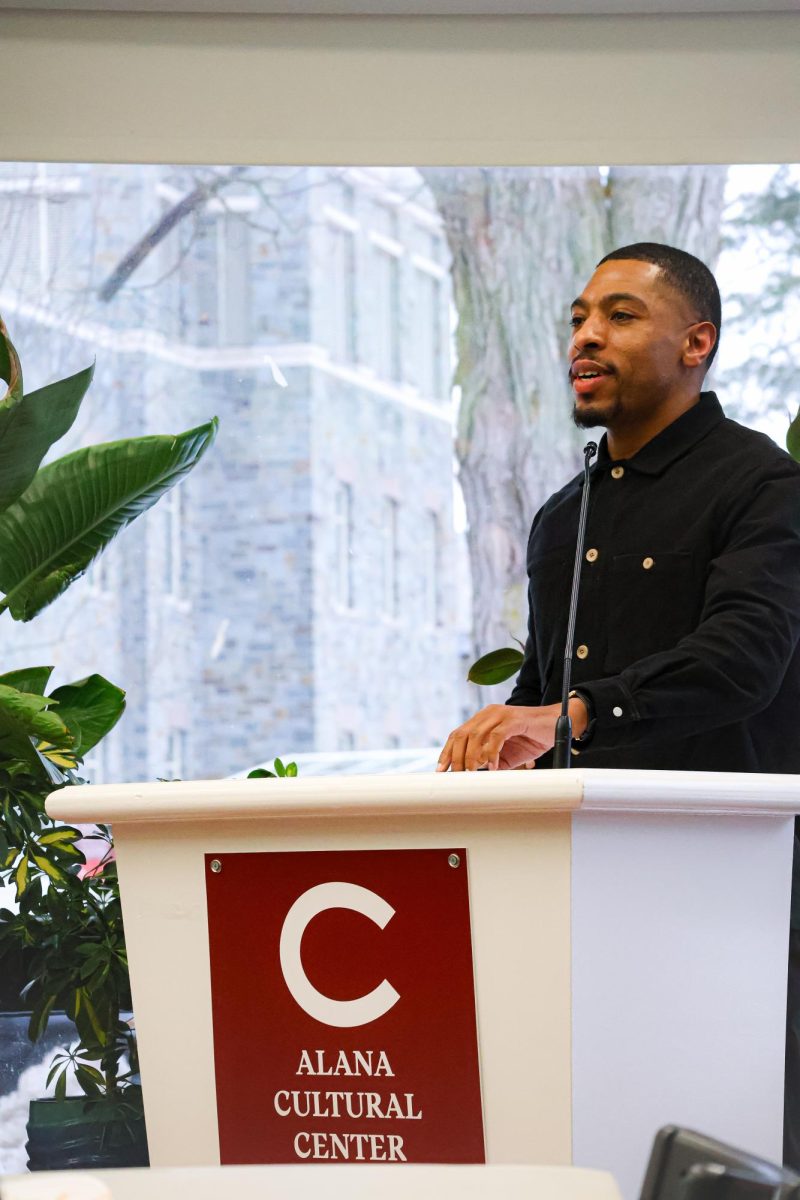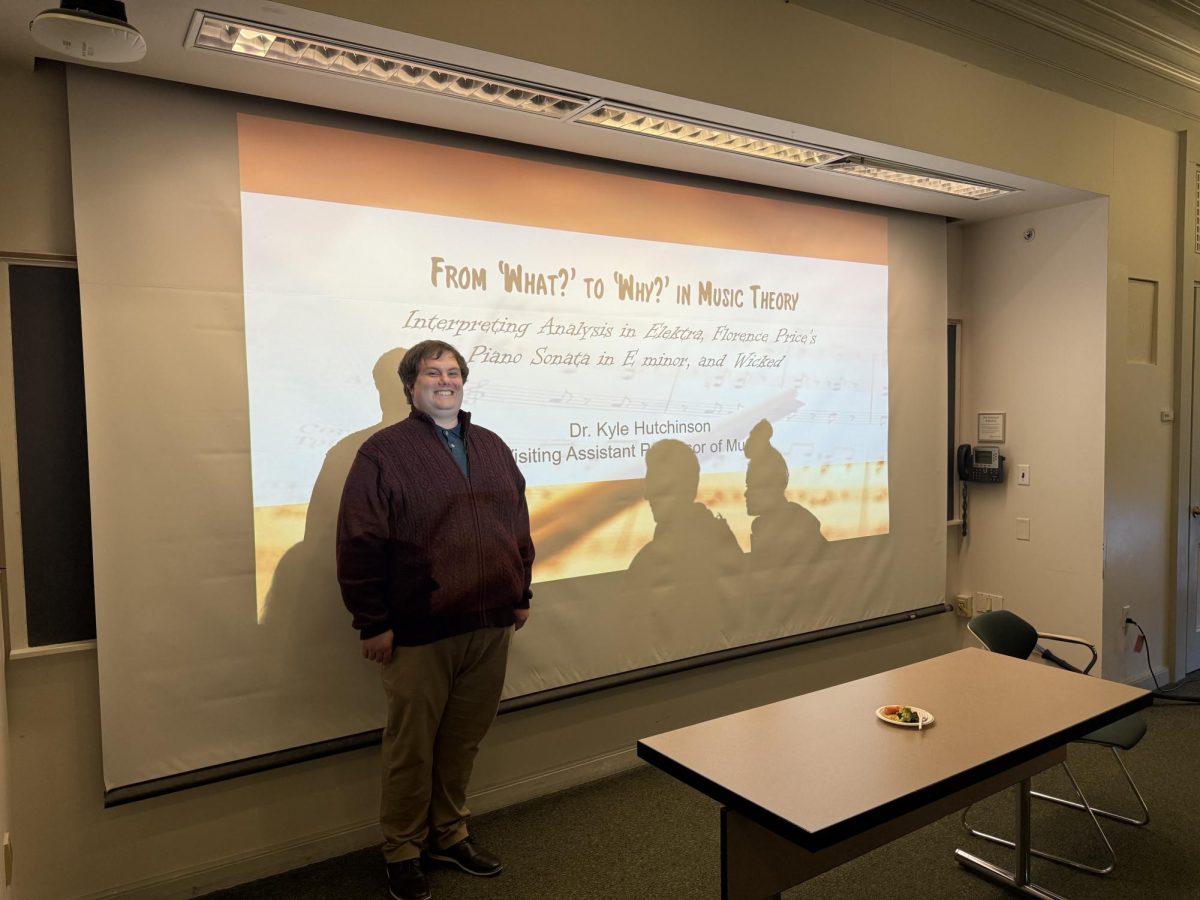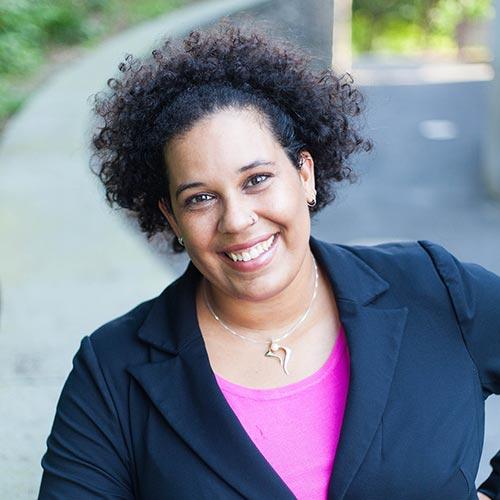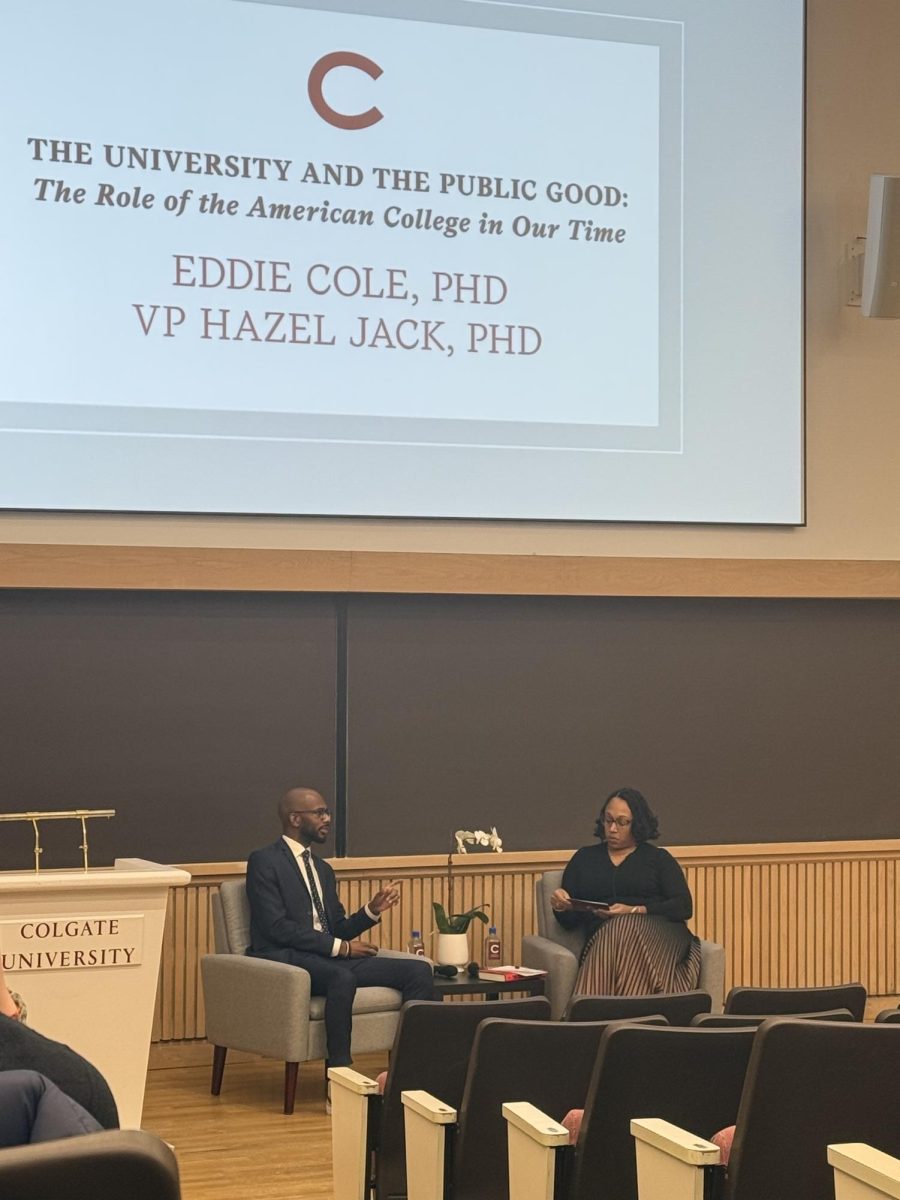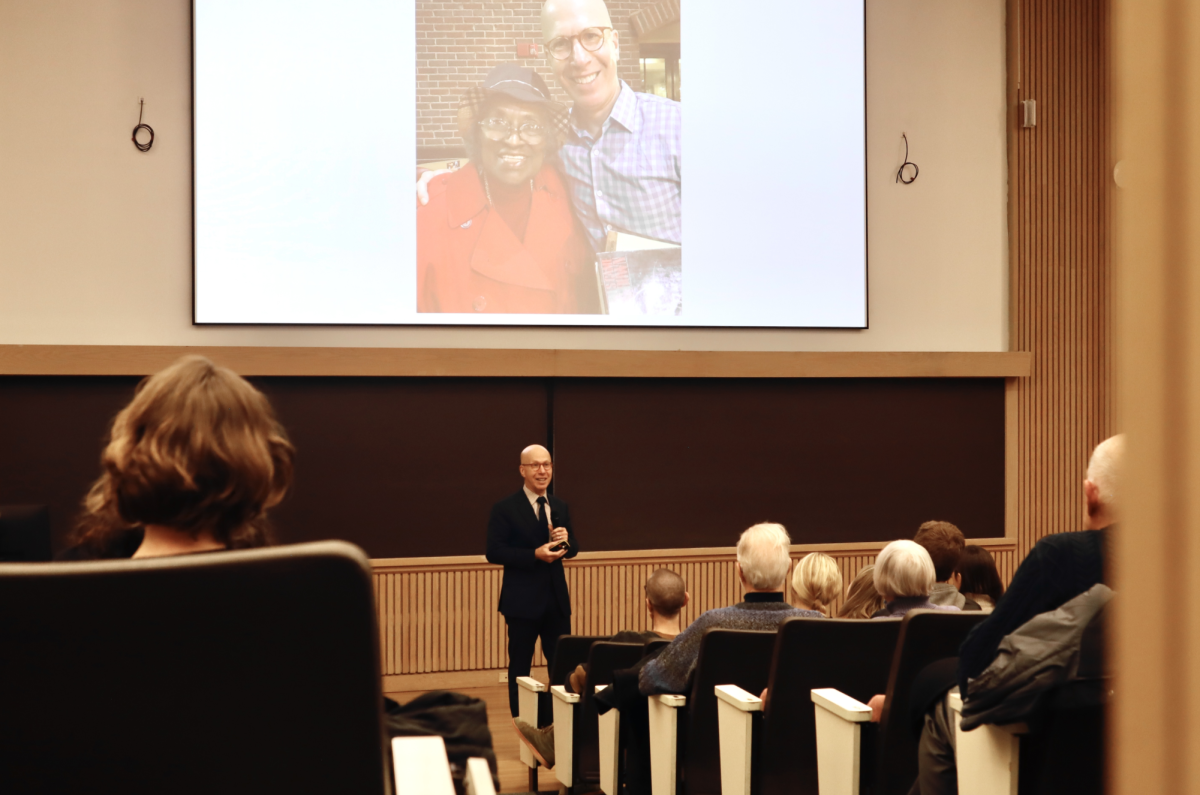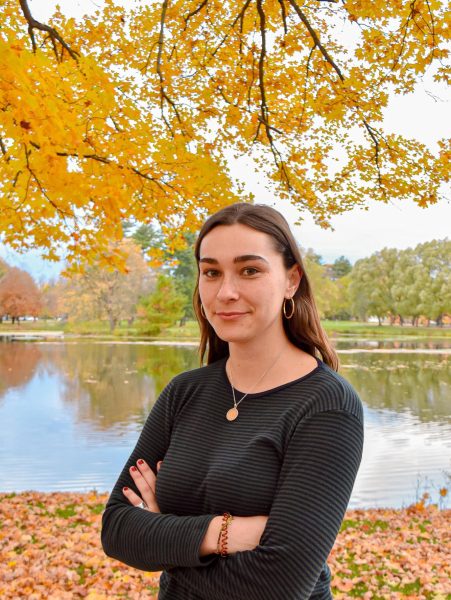Colgate University has started to regulate traffic on Academic Drive behind Lathrop Hall and Lawrence Hall beginning the week of Nov. 11. Now, a Campus Safety officer is stationed between the two buildings to direct traffic and regulate vehicle flow at the popular student drop-off and pick-up location commonly referred to as “the gap.”
The adjustment was announced via email Nov. 11 to the Colgate community by Associate Vice President for Emergency Management, Campus Safety and Environmental Health and Safety Joseph Hernon. Hernon stated the updated traffic measures on Academic Drive were meant to protect students and staff. He further explained to the Maroon-News why Campus Safety had positioned an officer behind two of the busiest academic buildings on Colgate’s campus.
“The traffic adjustments in that area were implemented to address pedestrian safety and congestion concerns,” Hernon said. “The officer was placed there to temporarily manage traffic flow, especially during peak hours, to ensure the safety of students, faculty and staff moving between buildings.”
Hernon emphasized that the traffic situation had gotten out of hand on Academic Drive.
“Given the high volume of vehicular and pedestrian traffic in that area, these measures were necessary to reduce potential hazards. Depending on call volume, we plan to have one to two officers there. This way, we can ensure the adequate flow of traffic and pedestrians,” Hernon said.
The traffic update was delivered to students with little advance warning, and Hernon emphasized that it was introduced as an effort to determine whether a more permanent change was welcome and necessary.
“At this time, the traffic flow adjustments are being evaluated to determine their effectiveness. However, we are gathering feedback and assessing whether these changes have successfully reduced congestion and improved safety,” Hernon said.
While the change was attributed to safety concerns, the new regulation has been met with mixed reactions amongst the student body and faculty at Colgate University. Senior Tai Pham saw the update as unnecessary and overbearing on the part of the University. To Pham, it felt like the administration was acting with an inherent distrust of Colgate students.
“It seems like the days of groups of students riding behind pickup trucks are over,” Pham said. “Yet another gentle reminder from the administration regarding students’ lack of responsibility and their ability to act like adults.”
Despite Pham’s negative feedback, Hernon reported an overwhelmingly supportive reaction from the community.
“It’s too early to say whether this will be a permanent solution or if traffic flow will eventually revert to previous patterns, but early feedback has been very positive,” Hernon said.
The new traffic patterns have not caused the same reaction from faculty traveling to and from Lathrop and Lawrence Halls.
Visiting Assistant Professor of Writing and Rhetoric Jonathan Najarian, who commutes to Lathrop daily, remains apathetic to the change.
“To be honest, I haven’t really thought all that much about it. Somehow, I’ve managed to avoid the whole thing, a few times by getting dropped off at Lathrop, a few others by parking down near Campus Safety or way over in the lot behind 100 Hamilton Street,” Najarian said.
Meanwhile, Assistant Professor of Writing and Rhetoric Robert Mills called for further updates to student driving allowances, citing accessibility for emergency vehicles or catering employees as current worries, as well as student speeding.
“It’s only a matter of time before someone’s recklessness ends in tragedy,” Mills said. “Rather than facilitating the clown-car routine, the University needs to address its underlying cause: inadequate transportation infrastructure on a campus with fundamental accessibility issues. Students shouldn’t feel they need to drive up the hill before 4 p.m. at all. Perhaps administrators should explore reconfiguring the Lawrence-Lathrop gap to include a cruiser stop — I know I’d use it — coupled with improved cruiser timetables and expanded access, especially along Broad Street.”
As feedback comes in, campus will have to wait to see if this change becomes permanent.




